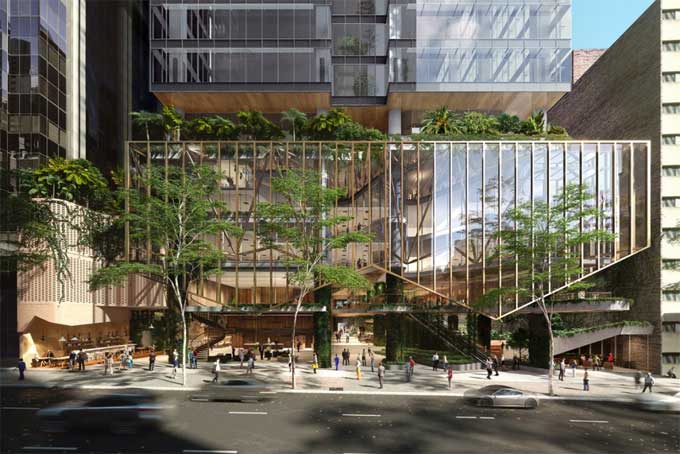
Usage and Definition of Thermobimetals for Breathable Buildings

Thermobimetal is a laminate made of two metals with various thermal conductivities that are used for building facades or shading systems. It is a composite metal that exhibits self-shading and self-ventilating qualities when temperatures change.
Originally designed as a shading system to create breathable buildings, thermoobimetal is a smart material which is now initially used to create automatic shading systems.
Structure and the Operation of Thermobimetals
When the temperature rises, various kinds of metals expand to varying degrees, and vice versa. When two metal strips with different rates of thermal expansion are joined together, the bottom strip partially inhibits the expansion of the higher strip during heating. The connected strips bend as a result of the ensuing force.
Due to the fact that a bimetal's performance is closely correlated with the impact of heat, it is also known as a thermostatic bimetal or thermobimetal. The bimetal will assume an arc form in the absence of any external influences.
What are some Features of Thermobimetals in the field of construction?
In accordance with ASTM specifications, a thermostatic bimetal is defined as a composite material that, as a result of the differing expansivities of its components, tends to alter its curvature as its temperature changes. The composite material is usually in the form of a sheet or strip.
A thermobimetal is made up of two metals layered together, usually steel and copper. When heated, these units bend in one direction, and then when cooled down, they return to their original position in the opposite direction. If there is a large difference between the thermal coefficients of the metals, then the displacement of the metals is likely to be greater.
A thermobimetal is made up of two metals that expand at different rates, resulting in the metals having a slow expansion rate and constricting each other in movement.
The thermobimetal designs can be made using different metals and calibrated in such a way that it responds dynamically to the surrounding environment.
The skin of a thermobotic metal facade is made up of several separately cut plates. During temperature changes, the gaps between the plates allow for variations in size, expansion, and curvature.
The metal plates curl and open up into a design when heated. This increases the amount of airflow in a room. The metal folds back and shuts the facade when the temperature drops.
What is the workflow of Thermobimetals?
The skin of a thermobotic metal facade is made up of several separately cut plates. During temperature changes, the gaps between the plates allow for variations in size, expansion, and curvature.
The metal plates curl and open up into a design when heated. This increases the amount of airflow in a room. The metal folds back and shuts the fa?ade when the temperature drops.
How does a thermobimetal building facade benefit you?
A thermobimetal facade is made to make optimum use of solar and ventilation energy. The thermobimetal skin does not require sophisticated sensors or energy to operate, in contrast to traditional shading systems.
What are some applications of Thermobimetals in Construction?
1. In response to the temperature of the sun, the thermobiometal core embedded within the double glazing system provides shade.
2. It can be used as a ventilation system to release hot air via the holes and allow it to rise.
3. It can be used in tall structures to cut down on energy consumption during a power outage.
A thermobimetal facade is made to make optimum use of solar and ventilation energy. The thermobimetal skin does not need sophisticated sensors or energy to function, in contrast to existing shading systems.
To learn more, watch the following video tutorial.
Video Source: NW EcoBuilding Guild
Building skins made of thermobimetal can ensure thermal comfort in an economical and environmentally responsible way.


